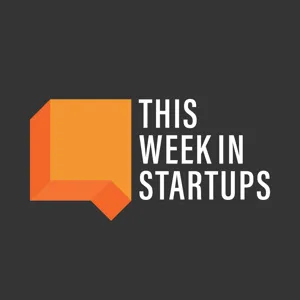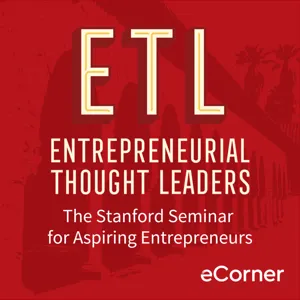Podcast Summary
Identifying Your Business Model for Effective Metrics Tracking: Understand your business model to track relevant metrics. Enterprise businesses focus on bookings, revenue, and contracts, while SaaS businesses charge monthly subscriptions and track MRR and churn rate. Distinguish between bookings and revenue, and only report revenue when service is delivered.
Understanding your business model is crucial in determining which metrics to track for potential investors. Craig Cannon, from Y Combinator, discussed nine common business models in a lecture and emphasized the importance of identifying your business model to effectively track metrics. He explained that most startups should fit into one of these categories, and provided examples and metrics for each model, including enterprise businesses, which track bookings, revenue, and contracts, and Software as a Service (SaaS) businesses, which charge a monthly subscription for software and track metrics like monthly recurring revenue (MRR) and customer churn rate. It's important to distinguish between bookings and revenue, and to only report revenue when the service has been delivered. Additionally, verbal offers and letters of intent do not equate to bookings or revenue.
Tracking essential metrics for a subscription business: Monitor Monthly Recurring Revenue (MRR), Annual Recurring Revenue (ARR), Gross MRR Churn, and Paid Customer Acquisition Cost (CAC) to gauge subscription business performance
For a subscription-based business, it's crucial to track four key metrics: Monthly Recurring Revenue (MRR), Annual Recurring Revenue (ARR), Gross MRR Churn, and Paid Customer Acquisition Cost (CAC). MRR represents the monthly income from subscriptions, while ARR shows the business's growth pace. Gross MRR Churn measures the loss of monthly revenue from churned customers, and Paid CAC helps determine the cost of acquiring new customers through paid marketing efforts. It's essential to remember that ARR stands for Annual Recurring Revenue, not Annual Run Rate, and only include truly recurring revenue in calculations. Additionally, for consumer subscription businesses, focus on monthly growth and unit churn instead of dollar churn.
Measuring Growth and Retention Depends on Business Type and Metrics: Accurately measure and report growth by focusing on relevant metrics for your business type, such as revenue, transaction volume, or user retention, and remember to consider compounded monthly growth rate since launch for accurate analysis.
The type of business you have and the metrics you focus on can greatly impact how you measure growth and retention. For businesses selling to companies with high-value subscriptions, revenue churn is the key metric to track. On the other hand, for transactional businesses like Stripe or PayPal, where many businesses process payments through their platform, gross transaction volume and user retention are the important metrics. It's crucial to accurately measure and report growth to set realistic goals and understand the health of your business. Remember, averages can be misleading and it's essential to measure compounded monthly growth rate since launch for accurate growth analysis.
Understanding GMV vs Net Revenue: Startups should differentiate between GMV and net revenue, focusing on net revenue as the actual cash received and monitoring growth metrics like compounded monthly growth rate and user retention.
It's crucial for startups to distinguish between gross transaction volume (GMV) and net revenue. GMV, which represents the total value of transactions processed, should not be mistakenly considered as net revenue, which is the actual cash received in the bank. Furthermore, metrics like compounded monthly growth rate and user retention are essential for consumer businesses to monitor their growth and user behavior effectively. Airbnb, as an example of a marketplace business, illustrates the importance of tracking net revenue accurately and focusing on user retention, considering the frequency of user behavior in their business model. A common mistake is blending organic and paid user acquisition data, which can lead to inaccurate cost per acquisition (CAC) calculations and potentially unsustainable growth.
Calculating Gross Margin and Tracking Key Metrics for E-commerce and Advertising Businesses: Accurately calculate gross margin, track monthly revenue, and compounded monthly growth rate for e-commerce. In advertising, focus on daily active, monthly active, and percent logged in users to build a sticky product. Define 'active' appropriately for your business.
Understanding your business model and tracking the right metrics are crucial for any company, especially those in consumer businesses like e-commerce and advertising. For e-commerce, it's essential to calculate gross margin accurately by considering all costs, including shipping, processing, and payment fees. Monthly revenue and compounded monthly growth rate are essential metrics to track. In the advertising space, the focus is on users, with daily active, monthly active, and percent logged in being the key metrics. Defining what "active" means for your business is crucial to build a sticky product. Hardware companies follow a similar approach, focusing on monthly revenue, compounded monthly growth rate, and gross margin. Overall, it's essential to clearly define your business model and metrics to make informed decisions and ensure long-term success.
Avoid common mistakes in presenting business metrics to investors: Be honest, measure accurately, and communicate clearly to investors. Focus on team, product-market fit, and market opportunity in early stages.
When presenting business metrics to investors, it's crucial to avoid common mistakes such as using cumulative charts, not labeling y-axes, changing y-axis scales, and only showing percentage charts. Instead, be honest, measure, and fix things. At the early stages, focus on team, product-market fit, and market opportunity. Investors primarily evaluate these areas, and having industry experience is not always necessary if you can clearly articulate your unique insight and thought process. Remember, you are teaching the investor about your business, so make sure you are clear and concise in your communication.
Speed and Adaptability in Building a Startup: Investors prioritize fast-moving teams that launch MVPs quickly and adapt to feedback. Solo founders must demonstrate a clear vision and understanding of their target user base to attract investment. Progress and learnings since previous applications are valued over the number of users.
Investors prioritize a fast-moving team when considering potential investments. They measure this by observing how quickly and iteratively a team launches their minimum viable product (MVP) and adapts to feedback. For solo founders, it's essential for the CEO to demonstrate clarity of thought and a compelling vision to investors, as if they can't convince their initial team, it will be challenging to attract investment. Additionally, the location of a team, whether remote or local, is becoming less of a concern due to advancements in technology. Ultimately, the focus should be on building a strong company, and investors will follow. Another key point discussed was the importance of identifying and understanding your target user base. If you can't find your first 10 users, it may indicate a lack of founder-market fit. Furthermore, investors look for progress and learnings since previous applications, regardless of the number of users. Overall, the conversation emphasized the importance of a fast-moving team, a clear vision, and understanding your user base in the eyes of investors.
Founders' clarity of thought and vision are crucial for startup success: Founders need a clear vision, make progress, and surround themselves with the right team to ensure startup success. International founders must demonstrate significant progress and market demand to secure investments.
Clarity of thought and a compelling vision are crucial for founders, especially when making the decision to drop out of prestigious programs or convince investors to back their startup. The founders of Brex went from a VR idea to corporate credit cards, and before hiring their first employee, they wrote down their vision, built a financial model, and tested assumptions to ensure they were making the right decision. International founders, in turn, need to demonstrate significant progress and a clear understanding of the market demand to convince investors from outside their region. Solo founders can also be successful, but having a co-founder or senior execs to lean on during scaling can make the journey less challenging. Overall, having a clear vision, making progress, and surrounding yourself with the right team are essential components for startup success.
Focus on building before fundraising: Solo founders should prioritize company growth and community over fundraising. Raise minimal capital to stay focused and avoid unnecessary hires. Long sales cycle companies may need early funding. Engage with investors only when ready and have a clear plan.
Solo founders should focus on building their company and community before considering fundraising. PG's post suggests raising as little money as possible to stay focused and avoid hiring too many people, which can lead to more problems. However, if a company needs capital to grow, it's essential to have a clear plan for how the money will be used to reach the next milestone. For companies with long sales cycles, such as health IT, it may be necessary to raise money before securing the first contract and showing progress through pilots. When interacting with investors, it's important to keep moving if they say it's too early and not take rejections personally. Engaging with potential investors before finding product-market fit is generally not advised.
Focus on building product and first 100 users before seeking investment: Early-stage startups should prioritize product development and acquiring initial users before approaching investors. Building a strong sales pipeline and leveraging referrals can help secure investment from angels.
For early-stage startups, the focus should be on building the product and acquiring the first 100 users before seeking investment from angels. Finding the perfect investor involves reaching out to a large number of potential investors through various channels, including AngelList, and treating the process like a sales pipeline. For minority female founders, gaining visibility within VCs can be challenging, but referrals from existing portfolio founders are the most effective way to get introduced. Evaluations from investors are more of an art than a science during the seed stage, and are based on factors such as the stage of the company, the desired ownership percentage, and market demand.






